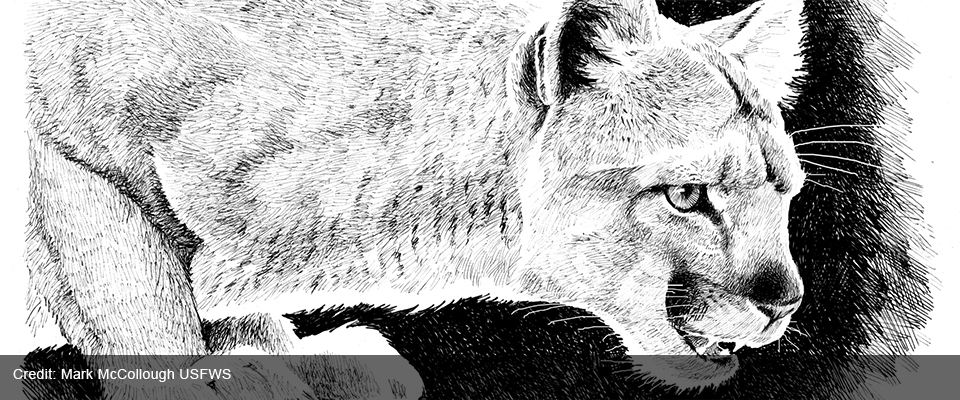US Wildlife Officials give up on the Eastern Mountain Lion

 The U.S. Fish and Wildlife Service announced last week that it is removing the Eastern Cougar from its threatened and endangered species list.
The U.S. Fish and Wildlife Service announced last week that it is removing the Eastern Cougar from its threatened and endangered species list.
While in some cases that could be cause for celebration, in this case it is because the federal agency has already declared the animal to be extinct (in 2011), and acknowledges that it has likely been extinct for at least 70 years.
The removal takes effect on Feb. 18; obviously extinct animals and plants are no longer threatened, and cannot be protected (Note that none of this affects the status of the Florida cougar, an endangered cougar subspecies found in southern Florida).
Using the words “cougar,” “puma,” and “mountain lion” interchangeably, according to the USFWS the last confirmed Eastern Puma was trapped in Maine in 1938. All of Ohio and West Virginia, the east coast from Georgia to Maine, and the Midwest were within the historical range of the Eastern Cougar.

Mountain lions have been gone from our part of the country for well over a hundred years. According to Ohio History Central the Eastern Cougar was extirpated from Ohio in 1838, and other sources say the last mountain lions in West Virginia were killed in the 1880s, but that doesn’t stop people from seeing them.
Here in Ohio and West Virginia, plenty of people see or at least think they see or hear cougars, but there usually isn’t a lot of evidence (road kills, incidental trappings, credible photographs, etc.) to confirm the sightings; where sightings are confirmed, the animal is usually an escaped captive or a western cougar.
However, it does happen. In 2011, a solitary young male cougar traveled about 2,000 miles from South Dakota through Minnesota, Wisconsin and New York, and was killed on a Connecticut highway. In December, 2014, wildlife officers in Kentucky shot and killed a mature male cougar. It was later determined through DNA that the cougar was from the Black Hills part of South Dakota, and state investigators believed that, judging from its age and condition, it was an escaped or released captive animal.
In 2014 an off-duty Ohio wildlife officer reported sighting a mountain lion in Jefferson County, but nothing ever came of it because there was no physical or photographic evidence backing the sighting. (Know this, no matter how convinced you are that you saw something, without physical evidence there is no “official” sighting, and photos from the internet do not count.)
In any event, I have been around wildlife long enough to never say never.
What does USFWS decision mean for lion lovers today? Probably not a whole lot, in fact there is some debate among wildlife biologists if there is really any substantial difference between eastern and western cougars other than their location, and mountain lions it seems are gradually returning to the east, so it may just be a matter of time until one is spotted near you, even if it is not a native Eastern Cougar.
Jim Freeman is the wildlife specialist for the Meigs Soil and Water Conservation District, and his column In the Open generally appears every other weekend. He can be contacted weekdays at 740-992-4282 or at [email protected].









